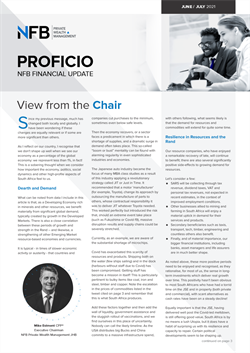To RA or not to RA
Can you still invest successfully for retirement?


Recently the financial press has been encouraging investors to disinvest from retirement products and move funds offshore. In this article, you will read the risks and benefits of retirement products to establish whether the latter outweighs the potential risks highlighted by media commentators.
Two risk realities
1. Limited choice regarding asset allocation
- Retirement funds may not invest more than 30% offshore, according to Regulation 28.
- Ironically, Regulation 28 was introduced to protect investors from losing money due to overexposure to offshore assets; but, since the regulation came into effect in 2011, offshore Investments have significantly outperformed local investments, as indicated here:
JSE 181.31% or 11.21% per annum in Rand versus MSCI World Index 357.19% or 16.9% per annum in Rand.
- Talk about unintended consequences! More than anything, I think this kind of regulation shows that attempting to regulate human behaviour is often a mistake. The solution to poor investment decisions is not regulation, but education.
2. The Risk of Government intervention, especially in the form of prescribed assets
- The way is currently being paved for Government to require retirement funds to invest in specific assets by allowing fund managers to invest in infrastructure projects. This move may sound innocuous and, in its present form, very well may be. The fear is, however, that this requirement is just a small step away from compelling fund managers into investments that potentially could lose money for their clients, owing to the history of corruption within such projects.
Positive planning is essential
It would be unwise to diminish these fears - they are legitimate and could have severe consequences on retirement provisions. Nevertheless, there is no need to create a false dichotomy because, through holistic planning, investors can mitigate their risks and move funds offshore while not losing out on the benefits of Retirement Funds.
This planning is client-specific and is imperative for achieving positive long-term results. The risk is that investors will blindly follow the media’s advice and will cash in retirement products (thereby incurring negative tax consequences) and move funds offshore. This trend will result in funds being placed into the market at near all-time highs at the tail end of the longest bull run in history. To achieve positive returns offshore, funds will need to be placed into Equity Markets as other assets in developed markets (Cash and Bonds) are yielding low or, in some cases, negative returns. The risk is that when these low-yielding markets recover as they inevitably will, investors will have sacrificed the benefits and followed the herd headlong into long-term capital losses.
The benefits of Retirement Funds are:
- Contributions are tax-deductible up to a maximum of the lesser of R350 000 or 27.5% of taxable income. This means that, if you are in the top tax bracket, you receive R0.45 deduction for every R1.00 invested.
- No tax is levied on Interest, Capital Growth, or Dividends.
- No Estate Duty is levied at death.
- No Executors Fees are levied at death.
Courtesy of Ninety One Asset Management, the below example illustrates the significant outperformance these compounding benefits create over time. The following scenario is based on the performance of Ninety One Opportunity Fund A:
For a term of 15 years ending 31 December 2020, R10 000 per month is invested in a Retirement Annuity (RA) while R5 500 per month (R10 000 – 45% Tax Saving) is portioned to a discretionary investment with both investments escalating at 5% per annum.
Furthermore, we consider the following assumptions:
- The R10 000 RA contribution is within the investor’s allowable deduction for retirement fund contributions.
- 20% of the fund’s generated return is of an income nature.
- The previously mentioned is taxed at 45% for the discretionary investment .
- The investor’s annual interest exemption has already been maximised and is not available in this case .
- There are no fund disposals.
At the end of the 15-year term, the RA and the Discretionary Investment would be worth R4 867 324 and R2 541 623, respectively. Evidently, the investment increased by R2 325 701 or 91% over the term. This increase is attributable to the effect of compounding growth on the additional capital which awards the investor greater returns, the longer the investment horizon.
It can be argued that had it not been for the restrictions of Regulation 28, investors could have 100% of the fund asset allocation offshore. We can also argue that the investor could have invested 100% offshore had it not been for the Regulation 28 restrictions. Although typically the MSCI World Index significantly outperforms the JSE on a pre-deduction basis, once the tax deductions have been factored in, the perspective of performance is widely different. In accordance with the above figures and assumptions, if, alternatively, 100% of the funds were to be invested offshore, the RA and discretionary values would be R2 200 604 and R1 875 923, respectively. This translates into a R324 681 or a 17% increase in the investment over the 15-year term. Evidently, the comparatives speak for themselves.
It is important to remember that business markets exhibit cyclical trends and although offshore investments have outperformed South Africa’s local investments over the past ten years, the opposite is true for the previous decade. From 2000 to 2010, the JSE All Share Index delivered growth margins of 18.2%pa while the MSCI World Index delivered -0.9%pa in Rands. Admittedly, South Africa has its problems, but so does the rest of the world and the JSE may very well outperform the MSCI yet again.
This scenario, however, illustrates only half of the picture. We need to be aware of post-retirement tax implications or those arising from the fund’s conversion to a living annuity. If this were the full picture you would still be better off due to the enhanced capital value of no tax being paid on interest, dividends, and capital growth. The investor still receives the same tax and estate planning benefits as noted earlier; however, they are required to withdraw a fully taxable income.
I often hear the argument that this simply means that whatever you received as a deduction on the way in is now paid as income tax on the way out. However, if you have done your financial planning carefully, you will delay or limit the withdrawal from the RA and utilise your discretionary investments held in Tax Free Savings Accounts (TFSA) and Endowments, taxed at 30%. Sound financial planning will ensure that your income withdrawals from the living annuity are taxed at a rate substantially lower than the tax deduction received on investing.
Therefore, I recommend that instead of a generic push to encourage investors to withdraw their retirement funds and transfer them offshore, investors should undergo a comprehensive financial planning exercise that takes their specific requirements into account. This plan will collectively utilise all available options including geographic and tactical asset allocation while also employing available tax structures to maximise long-term returns.
 |
This article was originally published in the Proficio, NFB's bimonthly financial update, edition June / July 2021. Download the complete NFB Proficio newsletter here |













